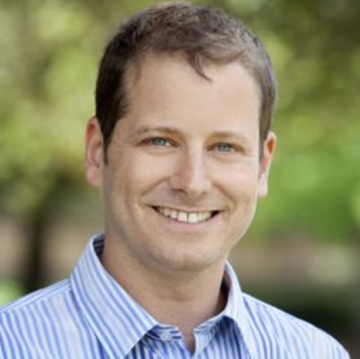Building an AI-Powered Organization

Overview
What distinguishes organizations that thrive in an AI-driven world from those that fail? What critical organizational features must successful executives consider to maximize innovation potential across the enterprise? This highly-engaging program brings together Stanford and industry experts in AI, product, and business leadership to conduct a deep dive in how organizational leaders use AI to transform their businesses, what can go wrong when they do, and how to avoid those pitfalls.
Drawing from the latest research, including business case studies of successes and failures, participants will learn:
- How organizations can be designed and structured to maximize the potential of AI.
- How to identify the opportunity space for AI-powered products.
- How to lead product development with AI in the loop.
- How to think through and avoid negative ethical and societal outcomes.
- How to source data to train AI systems.
Throughout the program, you will engage in a hands-on team-project that will help you hone your understanding of the concepts reviewed in the program, and their real-world business applications. At the end of the week, you will receive feedback from Stanford faculty on your ideas for incorporating AI in your organization.
Every evening, you will hear from Stanford faculty and industry experts on some of the cutting edge research and applications in a variety of AI fields such as robotics, vision, and medicine.
No technical AI or computing skills are required for this executive program.
Get updates on HAI Executive Education opportunities

Key Benefits
- Learn to design an AI-Powered organization.
- Understand how to manage your organization with data.
- Gain experience in envisioning, designing, and testing AI products.
- Identify cutting-edge product and technical opportunities for your organization.
- Gain a new understanding of ethical and societal responsibilities of organizations using AI.
Who Should Attend
Executives in a position to impact their organization’s design and drive the implementation of AI technologies to transform their businesses. They oversee organizational design and product development strategies where AI can have a powerful impact on your business outcomes. They need to understand the rapidly evolving landscape around AI and emerging technologies in these critical leadership areas--in a short course format.
- Leaders looking to design their organizational structure to maximize AI business outcomes.
- Executives-- from any size company or industry-- who need to understand the organizational, design, and corporate strategy implications of AI and related technologies.
- Key decision-makers and executives seeking a better understanding of the implications of AI for their product development strategy and design.
- Example titles and functions: chief strategy officer, chief technology or chief information officer, chief innovation officer, chief executive officer, board member/ director, other c-suite roles, VP, executive director, or director overseeing product development, organizational design, and/or innovation.
No technical AI or computing skills are required for this executive program.

Faculty Director
Michael Bernstein: Michael Bernstein is an Associate Professor of Computer Science and STMicroelectronics Faculty Scholar at Stanford University, where he is a member of the Human-Computer Interaction Group. His research applies a computational lens to helping groups achieve their collective goals. He designs, builds, and studies social computing systems at scales from teams to crowds. This research has won best paper awards at top conferences in human-computer interaction and reported in venues such as The New York Times, New Scientist, Wired, and The Guardian. Michael has been recognized with an NSF CAREER award, Alfred P. Sloan Fellowship, and the Computer History Museum Patrick J. McGovern Tech for Humanity Changemaker Award. Learn more

Additional Faculty
Melissa Valentine: Melissa Valentine is an Associate Professor at Stanford University in the Management Science and Engineering Department, and co-director of the Center for Work, Technology, and Organization (WTO). Melissa’s research focuses on understanding how new technologies change work and organizations. She conducts in-depth observational studies to develop new understanding about these changes. Her work makes contributions to understanding classic and longstanding challenges in group and organizational behavior, but also brings in deep knowledge of how the rise of information technology has made possible new and different team and organizational forms. She and collaborators won a Best Paper Award at the CHI Conference on Human Factors in Computing Systems and the Outstanding Paper award from the Organizational Behavior division of the Academy of Management. Learn more

Amir Goldberg: Amir Goldberg is an Associate Professor of Organizational Behavior in Stanford’s Graduate School of Business, Amir’s research lies at the intersection of cultural sociology, data science and organization studies. He is interested in understanding how social meanings emerge and solidify through social interaction, and what role network structures play in this process. The Co-Director of the Computational Culture Lab, Amir uses and develops computationally intensive network- and language-based methods to study how new cultural categories take form as people and organizational actors interact. Learn more
More Information
No technical AI or computing skills are required for this executive program.
Contact: hai-institute@stanford.edu